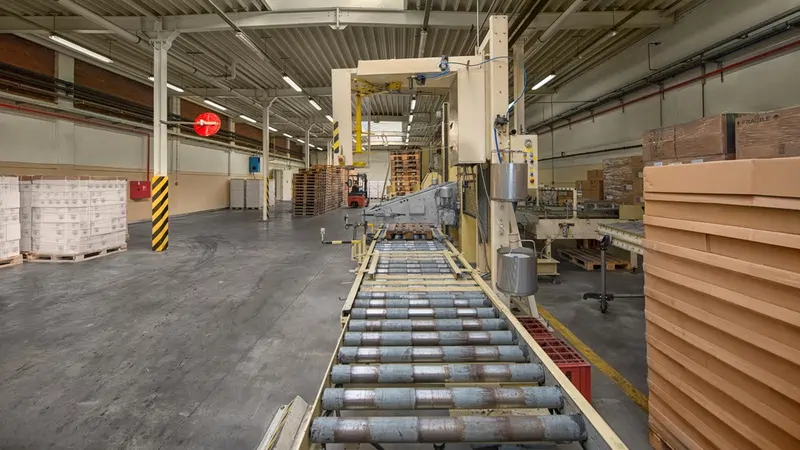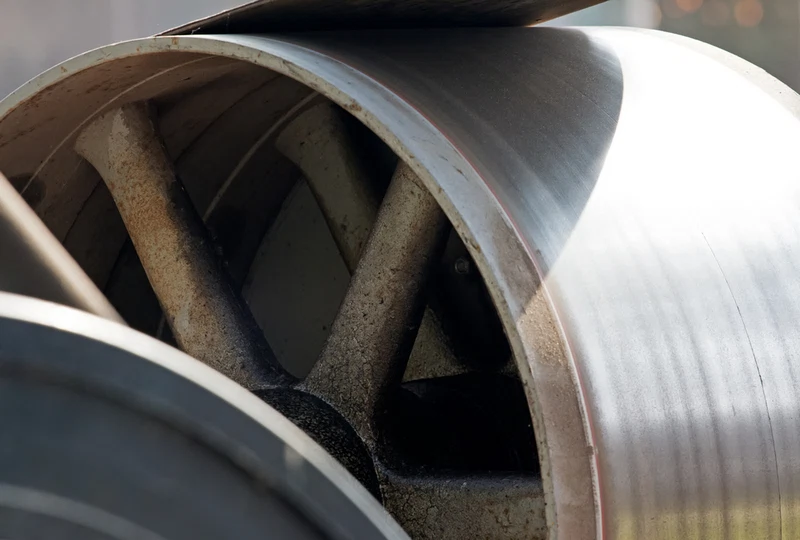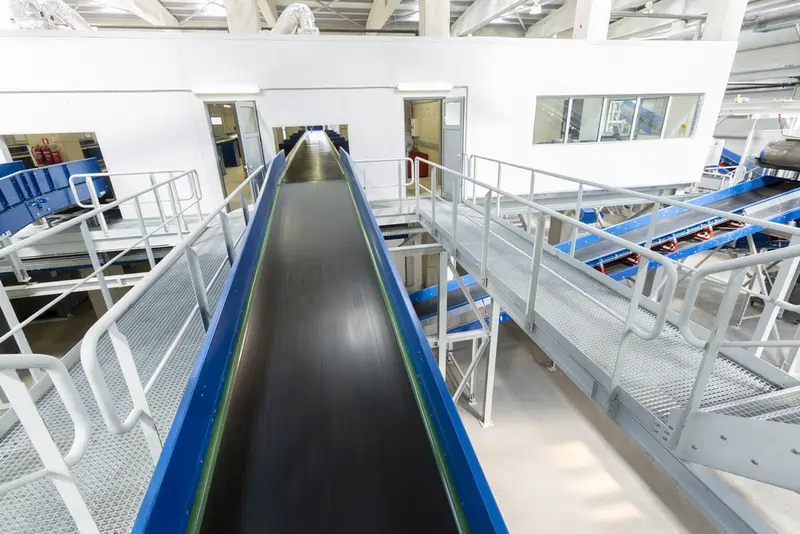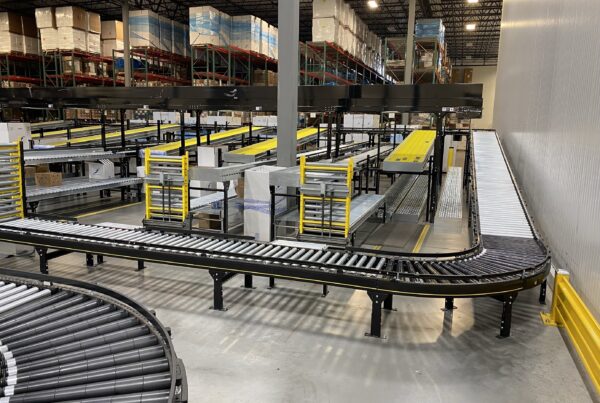What Is a Conveyor Belt System and What Is the Use of It?
A conveyor belt system transports different types of materials, including raw goods, and finished products, between locations.
Conveyors can move goods to the intended location within the same floor or at another location within the facility. Industrial conveyor belt systems ease the tough task of material-handling across industries, including warehouses, distribution spaces, packaging, and production & manufacturing.
Conveyor belt systems have become indispensable for businesses that deal with materials such as raw products, heavy goods, bulk products, and sharp goods.
Operation and Parts of a Conveyor Belt System
Conveyors can either be fixed or movable. A fixed conveyor is usually connected to ancillary equipment using peripheral components. The equipment can be non-conveyor equipment or an already existing conveyor system.
There are also portable conveyor systems, which can be easily moved around. A portable conveyor is also known as a mobile conveyor belt system. It is popular in industries such as parcel delivery and logistics where materials are moved across floors and according to incoming material load.
Portable conveyor systems can be adjusted to handle different loads and can be moved easily, which makes them integral to such industries.

Parts of a Conveyor Belt System
The key components of a conveyor belt system are:
- Pulleys – A conveyor may consist of two or more pulleys that pull the conveyor belt. The primary pulley is called a drive pulley, which is powered and drives or pulls the belt.The other belt is the idler pulley. This pulley accomplishes multiple functions. It changes the direction of load transmission, picks belt slack, or enables a clutching action.
Idler pulleys do not serve any mechanical purpose. Their main function is to keep the conveyor belt rolling and lead the belt around a turn.
The drive and idler pulley, in unison, regulate the movement of the belt system.
- Belt System– The belt is the visible part of the conveyor system that moves the load along. The belt is stretched across two or more pulleys in the conveyor system. This component forms a closed and continuous loop around the pulleys.This arrangement enables the belt to rotate continuously as it delivers and picks up materials for delivery at the required destination.
- Drive Unit – A drive unit enables the conveyor system to move. This unit consists of a counter-bearing component that ensures that all parts of the conveyor are moving smoothly. Whether the conveyor moves forward or backward, the drive unit makes the necessary motion possible for the system.The drive unit also makes it possible for the conveyor to adjust itself to direction change requirements where and when necessary. In an automated conveyor belt system, the drive unit is powered by a motor. In conveyor systems that are manually operated the drive unit is not powered by a motor.
The above components are present in all conveyor belt systems; however, they may differ in the positioning and in the material used for different conveyor designs.
How does a Conveyor System Work?
The conveyor belt forms a closed-loop across the pulleys, which enables continuous movement of the system. Conveyor systems mostly use a rotor to power the belt and drive the pulley. The presence of friction between the rotor and the belt enables the belt to stick firmly to the rotor at all times.

The idler and drive pulley are always maintained in the same direction – either clockwise or reverse – to ensure smooth and efficient belt movement.
Standard conveyors such as those used for groceries or moving walkways are straight in design.
Applications that need the conveyor to turn around bends use a rotor or wheels for the purpose. This rotor or wheel allows the belt to navigate along the bend without getting twisted.
Types of Conveyor Belt Systems
Belt conveyor systems manufacturers design two primary types of systems. These include belt systems for general material handling and belts for bulk material handling.
- General Material–Handling Belts – These belts are made of 2 material layers. The outer layer is known as the Cover. The purpose of the cover is to protect the inner layer called the Carcass.It is the structure of the Carcass layer that specifies the tensile strength of the conveyor belt. The Carcass functions by absorbing the force when stress is applied to the belt. The greater the tensile strength of the Carcass, the more efficient the belt is in moving materials that demand greater pushing strength.
The design of the Carcass depends on the materials used in the belt. For example, in steel cord belts, the Carcass is made of steel cables arranged in series into the belt. The cables are cushioned by rubber. In fabric belts, the Carcass has “mats” of the fabric protected by layers of cushioning.
- Bulk Material-Handling Belts– Bulk material-focused industries, such as processing plants, use conveyor systems with bulk material-handling belts. These belts are made of either rubber, polyester, or neoprene. The layers of these belts are the same as those of general belts.The material is determined according to the materials that will be handled by the conveyor. For example, in industries such as milling and mining, which see heavy bulk materials, the conveyor belt systems are made of rubber. Bulk material-handling belts also feature different thicknesses and coating specifications compared to general-purpose belts.
In Conclusion
A conveyor belt system makes material transportation easier, faster, safer, and efficient. Well-designed conveyors take the load off of material handling across production lines.
Processes using materials that may be too bulky for people can benefit from conveyor systems. Manual handling can result in time consumption, material damages, physical strain, and even injuries. By automating material movement, a conveyor system saves time and resources for businesses.
An inclined conveyor serves the best in processes where materials need to be moved across floors or across multiple levels on the same floor. It simplifies and speeds up the task of moving materials up and down.

The efficiency of conveyor belt systems in handling a wide range of business materials, from raw goods to heavy end-products such as vehicles, makes them a great asset for businesses. SRSI only partners with world-class conveyor manufacturers so we can provide you products of the highest quality.
Are you considering a conveyor belt system for your business? Contact SRSI today for design and implementation solutions: [email protected].
 Skip to main content
Skip to main content






